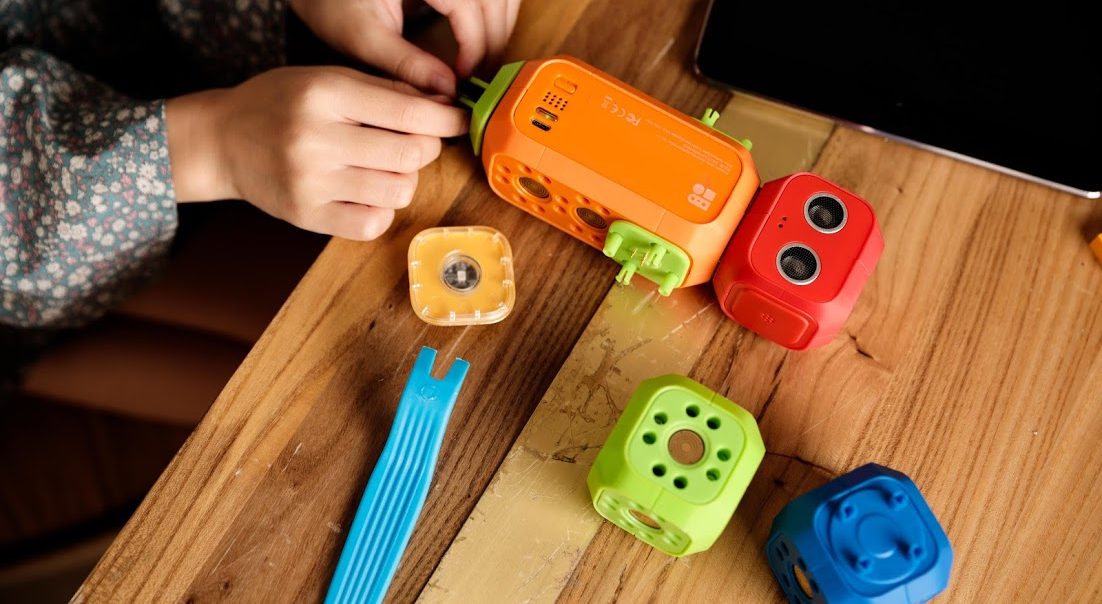
Articles
Industry News
Robo Wunderkind Demonstrates Their Child-Friendly Robotics Product at ISTE
By Cait Etherington
June 23, 2019
Many people believe the future is going to be all about robotics. Despite widespread fears that robots and AI will lead to mass job losses in the coming years, by one estimate, AI and robotics will create 60 million more jobs than these fields eliminate between now and 2022. Moving forward, job growth in the AI and robotics fields is expected to continue growing. For this reason, there is a growing push to ensure that learners, even very young learners, understand robotics. This is precisely what Robo Wunderkind aims to deliver.
Bringing Robotics to K-12 Learners
Robo Wunderkind was founded in Vienna in 2013 by three entrepreneurs, including Anna Iarotska, Rustem Akishbekov, and Yuri Levin. Since launching, the edtech company has raised 2.2 million and found a way to bring its product into more than 200 schools around the world. Its mandate is simple: provide young learners with an accessible way to explore the world of robotics, as well as coding.
The company’s founders developed their innovative product after realizing that most existing robotics kits on the market were far too challenging for very young learners. Following a period of research and development, Robo Wunderkind launched a product that is simple enough for very young children to use but also capable of being used in increasingly challenging ways as children grow. This is why the product has notable educational benefits that not only support STEM subjects but also other disciplines, including language learning.
With the help of Robo Wunderkind, very young learners can engage in simple play-centered tasks. But more advanced learners–that is, those in fourth and fifth grade–can do a lot more. For example, with the support of the Robo Wunderkind curriculum, more advanced learners can use Python API to start programming robots.
Robo Wunderkind At the 2019 ISTE
Anyone who doubts the potential to teach robotics to children as young as kindergarten will have a chance to see Robo Wunderkind in action from June 23-26 in Philadelphia at the International Society for Technology in Education (ISTE). Members of the Robo Wunderkind team will be at ISTE demonstrating their innovative new edtech products for three days. Beyond demonstrating their product at their own booth, the Robo Wunderkind team is participating in several ISTE workshops, including Early Learning Playground at 8:00 am on June 24.
The Benefits of Teaching Robotics at the K-5 Level
There are myriad reasons that teaching robotics to children is beneficial. Known benefits are both educational and economic and span both hard and soft skills.
To begin, there is strong evidence that teaching robotics is a fun way to introduce complex mathematics and science skills at a young age.
Second, because building and programming robots is a collaborative task, introducing robotics can also promote a range of soft skills, including collaboration. A 2014 study by Timothy T. Yuen et al. from the University of Texas as San Antonio, for example, discovered, “The social environment necessary for collaboration provides a network of support, which can result in positive affect towards robotics, motivated learning and a higher sense of self-efficacy.”
Finally, there are indications that teaching robotics to young learners may also help prepare a skill-ready workforce. While students are often exposed to core subjects at a young age, including mathematics and English, applied science fields are often not introduced until the end of high school. Unfortunately, if students don’t discover robotics until the end of their high school career, they may already be too far along to apply to engineering programs at the university level. After all, unlike most university programs, engineering programs are generally “direct entry,” which means students must apply directly from high school with a set of established prerequisites.
Photo courtesy of Robo Wunderkind.









No Comments